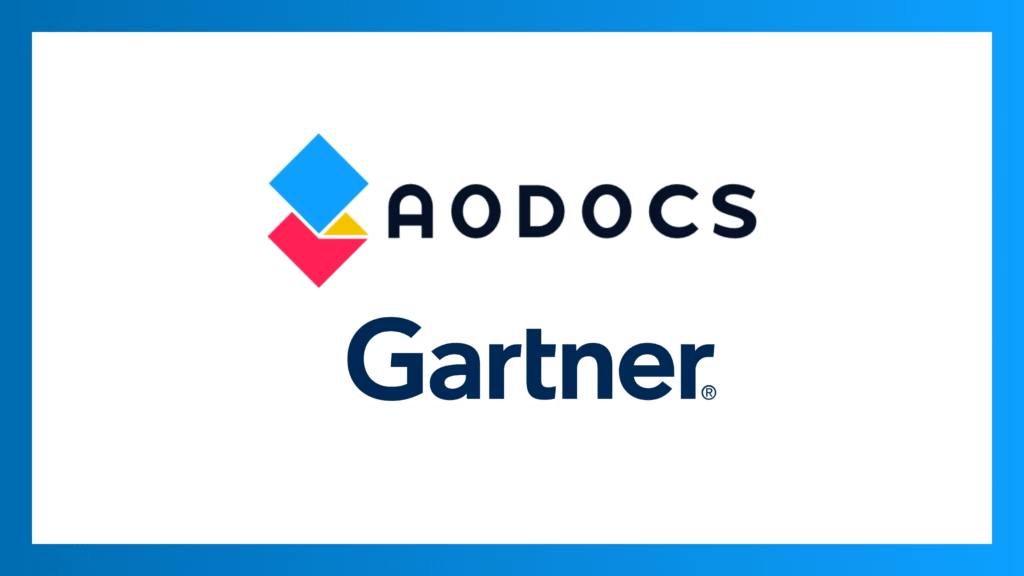21 CFR Part 11 sets the rules for how life sciences companies manage electronic records and signatures—and the stakes couldn’t be higher. From avoiding FDA warning letters to protecting patients and safeguarding brand trust, compliance is essential. This guide explains the key requirements of Part 11 and shows how a modern, validated DMS makes compliance simpler, safer, and fully regulator-ready.
When working in FDA-regulated industries such as life sciences, pharmaceuticals, and medical devices, organizations must comply with 21 CFR Part 11—the regulation that governs electronic records and electronic signatures (ERES). The goal of Part 11 is clear: to ensure that digital records are as trustworthy, reliable, and equivalent to paper records.
Compliance is not optional—nor is it simple. Failing to meet Part 11 requirements can expose organizations to serious risks, including regulatory enforcement actions (warning letters, audit findings, or even product holds and recalls), compromised data integrity, operational delays, reputational damage, and security breaches such as unauthorized access or data loss. That’s why compliance is not just about technology—it’s about ensuring business continuity, protecting patients, and safeguarding brand trust.
The following guide breaks down the key requirements of 21 CFR Part 11 and explains how a modern DMS supports compliance—so you can focus less on risk management and more on advancing innovation.
Subpart A – General Provisions: Scope & Definitions (§11.1–11.3)
Before diving into the technical details of electronic records and signatures, it’s important to start with the foundation: understanding the scope of Part 11 and who it applies to.
Part 11 applies to electronic records and signatures used in FDA-regulated activities. When using an AI-powered and cloud-native DMS, companies can accelerate the QMS process while retaining full control and ownership over how these rules apply to their operations. Modern platforms provide the technical framework to comply, while organizations align usage with their internal quality and compliance programs.
With the groundwork established, we can now move from the general provisions to the core of Part 11—how electronic records must be managed, validated, and protected to remain trustworthy.
Subpart B – Electronic Records: Ensuring Trust and Traceability
Once organizations establish whether Part 11 applies to them, the next challenge is ensuring that their electronic records are accurate, secure, and regulator-ready. This is where the bulk of compliance requirements come into play.
System Validation (§11.10)
FDA requires systems to be validated for accuracy, reliability, and consistent performance. AODocs offers a computer system validation subscription model, helping customers maintain validated states throughout system upgrades and process changes.
Audit Trails (§11.10)
Every action is securely tracked. AODocs automatically captures time-stamped audit trails—including user ID, date, time, and details of every change—to ensure full traceability and regulatory readiness.
Record Retention (§11.10)
Retention policies can be defined within AODocs to align with FDA and ISO requirements, ensuring records remain secure and accessible for their entire lifecycle.
Access & Authority Controls (§11.10)
Granular permissions, role-based access, and workflow-driven authority checks prevent unauthorized actions, ensuring only qualified individuals perform regulated tasks.
Operational & Device Checks (§11.10)
Workflows enforce the proper sequencing of steps. Built-in validation and secure coding practices protect against incorrect data entry or malicious inputs.
Document Controls (§11.10)
AODocs manages revision histories, change controls, and controlled distribution, ensuring regulated documents remain reliable, consistent, and compliant.
Open Systems (§11.30)
For organizations using open systems, AODocs applies safeguards such as encryption and integrations with trusted identity providers to mitigate security risks.
Of course, records are only half of the story. To ensure accountability and integrity, Part 11 also sets clear expectations around electronic signatures—the subject of the next section.
Subpart C – Electronic Signatures: Security and Accountability
Electronic signatures carry the same legal weight as handwritten ones—but only if they meet strict requirements for security, uniqueness, and traceability. Regulators want assurance that every signature can be tied to the right individual, at the right time, for the right reason.
Signature Manifestation & Linking (§11.50–11.70)
Electronic signatures in AODocs are permanently linked to records, displaying the signer’s name, date, time, and intent—making accountability clear.
Unique Identification & Identity Verification (§11.100)
Each electronic signature is tied to a unique user ID and authentication process. Organizations are responsible for verifying identities before assignment.
Signature Components & Sessions (§11.200)
AODocs supports multi-factor authentication (e.g., ID + password) and requires password re-entry for continuous sessions to maintain security.
Password & Security Controls (§11.300)
Password uniqueness, periodic reviews, and safeguards against unauthorized use are built into the platform. Combined with internal credential management policies, this ensures a layered defense against misuse.
By tying together validated systems, trustworthy records, and secure signatures, organizations can create a fully compliant environment. Let’s bring it all together with the practical business benefits of compliance and what a modern DMS can deliver.
Key Takeaway: What’s in It for You?
21 CFR Part 11 compliance isn’t just a regulatory checkbox—it’s a shared responsibility that can be turned into a competitive advantage.
This is where a new-generation Quality Management System (QMS) built on a modern Document Management System (DMS) comes in. Designed to align with FDA expectations and global standards such as ISO 13485:2016, such modern solutions help organizations implement the required technical controls while also enabling accountability for policies, training, and procedures. With this approach, companies can reduce compliance risk, streamline operations, and demonstrate to regulators that their records and processes are secure, reliable, and transparent.
By combining a modern DMS with strong internal compliance practices, life sciences companies can:
- Minimize the risk of FDA enforcement actions, audit findings, or recalls.
- Protect data integrity and ensure records are regulator-ready.
- Safeguard intellectual property, patient data, and business-critical information.
- Accelerate innovation by reducing compliance burdens and operational bottlenecks.
Powered by trusted AI tools that are deployed only on up-to-date and validated documents, AODocs provides the technical foundation for compliance: validated systems, audit trails, secure signatures, role-based authority checks, and record retention controls. Organizations, in turn, bring the people, policies, and training that demonstrate true accountability.
Importantly, being “AI-powered” and being “validated” are not incompatible—when AI features are integrated into a compliant DMS, they can support 21 CFR Part 11 requirements rather than undermine them. We explain more in this blog post on why AI agents often fail—and how to fix it. We’ll explore this topic further in a dedicated post.
With the right DMS, compliance shifts from a burden to an enabler of quality, trust, and speed to market.
👉 Want to learn more?
Get your full 21 CFR Part 11 compliance checklist
Explore our 21 CFR Part 11 assessment
Check out AODocs’s Knowledge Base summary
👉 See for yourself:
AODocs Quality Management System
How MedTech Breakthrough o8t Secured Compliance and Quality



